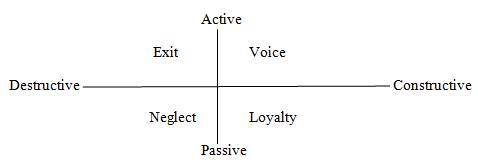Job satisfaction is a psychological aspect. It is an expression of feeling about the job. Job satisfaction is an attitude. It is a permanent impression formed about the job. Employees interact with people and other resources while working with the job. In the process, they experience positive or negative feelings about the job context and content. The concept of job satisfaction has gained importance ever since the human relations approach has become popular. Most Important Determinants of Job Satisfaction Job satisfaction is intangible and it is multi-variable. A number of factors influence job satisfaction of employees. They can be classified into two categories. They are organizational and personal variables. They are discussed below: Organizational Determinants: Employees spend most of the time in organizations. Therefore, a number of organizational factors determine job satisfaction of the employees. Organizations can increase job satisfaction by organizing and managing the organizational factors. Let us learn Continue reading
HRM Concepts
Employee Responses to Job Dissatisfaction
Employee can express job dissatisfaction in a number of ways. For example, rather than quit, employees can complain, be insubordinate, steal organizational property, or shirk a part of their work responsibilities. Following figure offers four responses to job dissatisfaction that differ from one another along two dimensions: constructive/destructive and active/passive. They are defined as follows: Exit: Behavior directed toward leaving the organization, including looking for a new position as well as resigning. Voice: Actively and constructively attempting to improve conditions, including suggesting improvements, discussing problems with superiors, and some forms of union activity. Loyalty: Passively but optimistically waiting for conditions to improve, including speaking up for the organization in the face of external criticism and trusting the organization and its management to “do the right thing”. Neglect: Passively allowing conditions to worsen, including chronic absenteeism or lateness, reduced effort, and increased error rate. Exit and neglect behaviors encompass our performance Continue reading
Theories of Collective Bargaining
Collective bargaining is process of joint decision making and basically represents a democratic way of life in industry. It is the process of negotiation between firm’s and workers’ representatives for the purpose of establishing mutually agreeable conditions of employment. Collective bargaining is a technique adopted by two parties to reach an understanding acceptable to both through the process of discussion and negotiation. Collective bargaining involves discussions and negotiations between two groups as to the terms and conditions of employment. It is called ‘collective’ because both the employer and the employee act as a group rather than as individuals. It is known as ‘bargaining’ because the method of reaching an agreement involves proposals and counter proposals, offers and counter offers and other negotiations There are three important theories of collective bargaining which have been discussed as follows: 1. The Marketing Concept and the Agreement as a Contract The marketing concept views Continue reading
Job Analysis – Meaning, Roles, Purposes and Types
Human resources management has to plan their activity to reach maximum level of organizational objective. Human resources personnel must have knowledge regarding skills required to perform various organizational jobs. Job analysis is done to get information regarding the requirement of skill, knowledge, experience, ability and other work related requirement. A job analysis is a systematic exploration of the activities within a job. Basically it is a technical process, which is used to define the duties, responsibilities, and accountabilities of a particular job. This analysis involves describing detail description about the task one has to perform during work, exploring the relationship with job to technology and determining knowledge, qualifications or the standards of employment, accountability of the person. There is an accuracy in recording activity is involved. The record consist information regarding following matter: Element: A job element is considered as the smallest element in which job is being divided. Job Continue reading
Career Counselling in Organizations
Career counselling is a process whereby an employee is guided by a manager in performance-related behavior. The employee is unable to perform the job satisfactorily. His work behavior is inconsistent with the work environment and organizational culture. It is manifested in fighting, stealing, unexcused lateness and absence. Career counselling involves guiding of employee by a manager to overcome performance problems. The problem is desire-created based on unwillingness. Career counselling involves the following steps: Identification of the performance problem – The reason for poor performance should be identified. Specific job behavior should be objectively documented in terms of date, time, and what happened. The manager should have good listening skills to uncover the reason for performance problem. The manager should focus on job performance problems only, not the employee as a person. He should treat the employee objectively, fairly and equitably. Make sure the employee owns up the problem – The Continue reading
Human Resource Strategy – Meaning, Objectives and Charactristics
Concept and Meaning of Human Resource Strategy The word ‘strategy‘ can be understood as a long range direction and scope of an organization. It provides a framework to achieve organizational goals and objectives. It develops a grand plan about how the company is going to achieve the desired result and how to compete with other rival firms. It also focuses on how the resources are employed effectively an efficiently. In the light of it, Human resource strategy can be defined as a process which helps management anticipate and manage the rapidly increasing changes. It is concerned with long range direction and scope of HR activities in the organization. It is broad action plan designed to accomplish the goals and objectives of human resource management function in the organization. Moreover, it is concerned with establishing relationship between long range HR direction and business strategy. It involves philosophy that people are managed Continue reading
